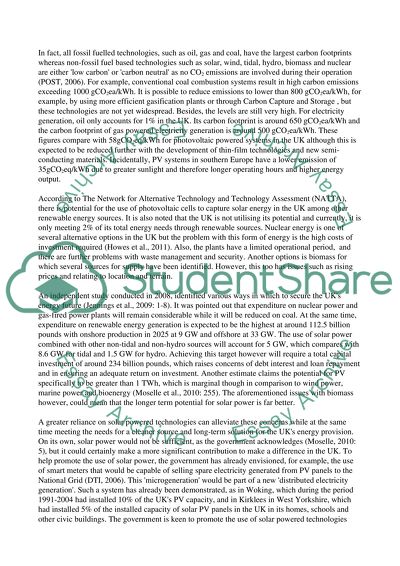Cite this document
(“Renewable and Solar Power in the UK Essay Example | Topics and Well Written Essays - 3000 words”, n.d.)
Retrieved from https://studentshare.org/engineering-and-construction/1394931-renewable-and-solar-power-in-the-uk
Retrieved from https://studentshare.org/engineering-and-construction/1394931-renewable-and-solar-power-in-the-uk
(Renewable and Solar Power in the UK Essay Example | Topics and Well Written Essays - 3000 Words)
https://studentshare.org/engineering-and-construction/1394931-renewable-and-solar-power-in-the-uk.
https://studentshare.org/engineering-and-construction/1394931-renewable-and-solar-power-in-the-uk.
“Renewable and Solar Power in the UK Essay Example | Topics and Well Written Essays - 3000 Words”, n.d. https://studentshare.org/engineering-and-construction/1394931-renewable-and-solar-power-in-the-uk.


